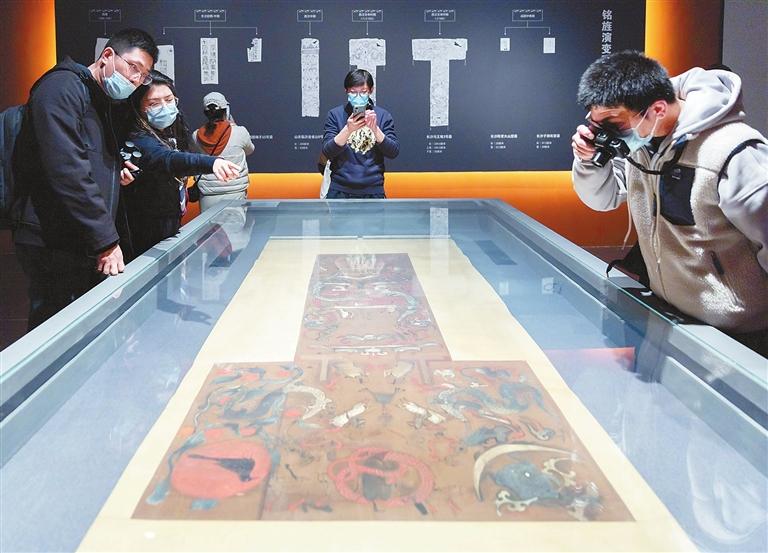
LI RUIQI, a 28-year-old staff member of an auction company, has been sharing her daily work experiences and knowledge about collectibles on her WeChat Channel account since the end of last year. Her subscribers have continued to grow as more people, especially the younger generation, are eager to learn about history and traditional culture. “Hello, everyone, today I’ll introduce you to the unique porcelain made in Qing Dynasty (1644-1911) during the reign of Emperor Daoguang (1821-1850),” said Li, with China Guardian Auctions Co. Ltd. From late February to early March, the auction house held a themed exhibition showcasing porcelain made in the imperial kiln during the Emperor Daoguang period. The event drew crowds of Beijing’s antique-lovers. “We do our utmost to explore the cultural connotation behind these collectibles, and try to get the information across to the audiences. When they see a collection, they will appreciate their beauty, and also understand the historical value of these objects,” said Li, explaining that commercial activities have a positive impact on the protection of cultural relics and collectibles. Nowadays, young Chinese are interested in learning about cultural relics, and professionals like Li Ruiqi are contributing to the inheritance and protection of traditional culture by sharing their knowhow with the general public. Shao Tianhong, also an art market insider, graduated from a British university and studied Chinese art history for her master’s degree. Shao has been working in the collectibles auction market since graduation. “I think young Chinese today have more opportunities to experience both Chinese and Western cultures, and their aesthetic and artistic perceptions are different from the previous generations,” Shao said. Shao said that to sort out historical information for collectibles, she would visit online databases or libraries across Beijing. “I feel a deep connection with history and I really like my job,” she said. Gan Xuejun, president of Beijing Association of Auctioneers, said that auction promotes and publicizes traditional culture, leads the public to recognize the value of cultural relics, and raises people’s awareness of protecting cultural relics and traditional artworks. “Young Chinese serve as a new force connecting the past with the future in the collectibles auction industry. They are professional and well-trained. China’s collectibles and artworks market will grow and catch up with global trends thanks to their efforts,” said Gan. Nowadays, both auctioneers and traditional museums have experimented with digital collectibles to appeal to the young. They digitize their collectibles and sell them to consumers online, including music, animation, games and handicrafts. In 2022, a traditional artworks auction company in the eastern Chinese city Nanjing launched nine digital collectibles of ancient paintings and calligraphy works, with a total distribution of 45,000 copies. They were sold out in just two minutes, bringing in 2.7 million yuan (about US$393,000). According to a report issued by the research firm iResearch, China’s digital collectibles market reached 280 million yuan in 2021. (Xinhua) | 
